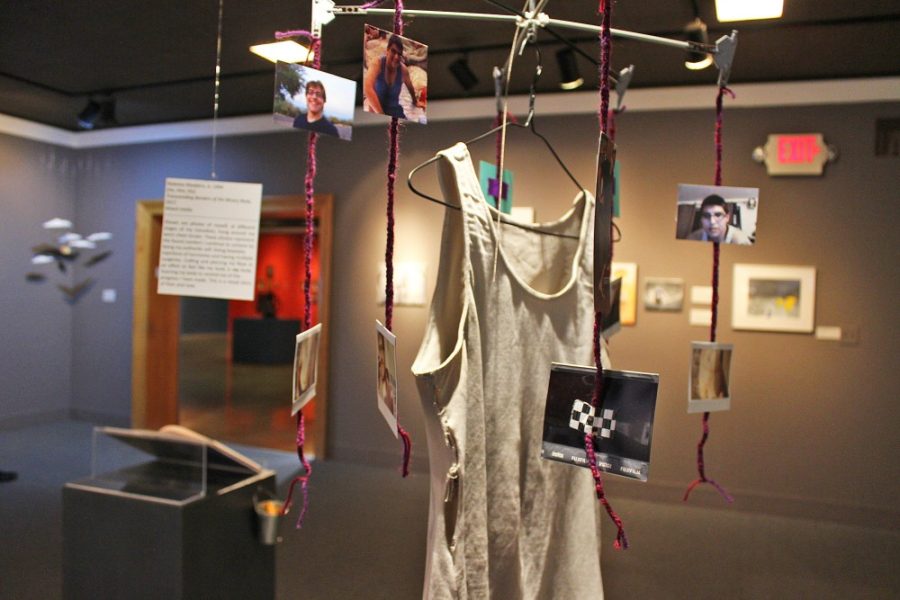Mapping Q has returned to the UA Museum of Art for its fifth exhibition and is allowing LGBTQ youth to examine representation within the museum and its artwork.
Partnered with the Southern Arizona AIDS Foundation and its Arizona Life Links for Youth, a suicide prevention program, Mapping Q has endeavored to provide a place for LGBTQ youth to discuss how they are represented within the museum and what changes and improvements they would like to see made.
“The idea is really about trying to get people — not just students but also the public — to rethink what it means to be welcomed in spaces,” said Chelsea Farrar, the curator of Community Engagement at the art museum. “When an individual doesn’t see representation of themselves in a museum, they are a lot less likely to feel like they are welcome there.”

Mapping Q provides a space for people to discuss how they feel about the representation of themselves in the museu. It also allows curators like Farrar to take note and have discussions about how to improve that space to allow everyone to feel welcome.
RELATED: UA Museum of Art welcomes interim director Meg Hagyard
The exhibit also gives LGBTQ youth a chance to examine the art and encourages them to take part and express themselves through artistic endeavors.
Farrar is the founder and manager of Mapping Q and first got the idea for the program when teaching at a high school. As both an art teacher and the Gay Straight Alliance facilitator, Farrar heard about the negative treatment some of her LGBTQ students were experiencing.
“We created a map, and I asked them to kind of map where were instances that these things were occurring,” Farrar said. “Through that experience, we realized most of the incidents were directly in classrooms and the administrative office itself.”
Farrar said the results of the mapping exercise surprised her as she had believed incidents like these would be more likely to happen in school hallways or in bathrooms, not in the presence of teachers and administrators.
“It made me rethink what is happening to make students feel safe in spaces that are supposed to be for them,” Farrar said.
She decided to bring a similar mapping exercise to the art museum, where she was interning at the time, to examine the climate in another public space. The Mapping Q program has been going strong ever since.
Participants are invited to tour the museum and record their thoughts about the various pieces of art and if they can see themselves represented anywhere in the space. When it can be difficult to find this representation, the question of how to create that feeling of inclusion is discussed.
The program also gives participants the chance to make art, expressing themselves through their own work to create a more inclusive environment. Oftentimes, this art is incorporated into the exhibit itself and gives the student creators a chance to show their work.
“This is not just art hanging up anywhere; this is art that’s in a gallery, that’s right next to the big hitters of modern American art,” Farrar said. “They’re seeing their work displayed in that same context, so it elevates their idea. It elevates their experience and identity in a way that they’ve never had before.”
RELATED: UAMA recovers valuable painting after 31 years
According to feedback from the participants, Mapping Q has helped the art museum make strides in representing a wider array of people through their artwork. When each Mapping Q exhibit opens, Farrar surveys returning participants and around 85 percent stated they felt more welcome in the art museum and on the UA campus compared to years prior.

“For me, Mapping Q has been everything from a fun place … to go after school and doodle to a place to have serious philosophical conversations with like-minded people and everything in between,” wrote Elvis Gertrude Godwin-Snyder in an email interview.
Godwin-Snyder is a psychology major at Pima Community College and has been involved in Mapping Q for about four years.
Godwin-Snyder was artistic before participating in Mapping Q, but he credits the program for encouraging him to continue pursuing art. His pieces have been featured in the museum three times.
“I want this program to continue to be an outlet for LGBTQ and allied youth in whatever shape or form,” wrote Godwin-Snyder. “I want to welcome everyone to come in the museum and open their minds to our perspectives and hopefully learn something along the way.”
Mapping Q opened at the museum of art on Aug. 18 and will continue until April 22, 2018. Any interested LGBTQ youth looking to get involved can find contact information on the exhibit’s web page.
Follow Victoria Pereira on Twitter









